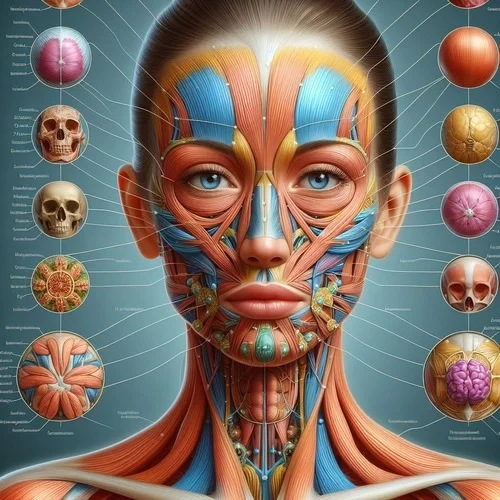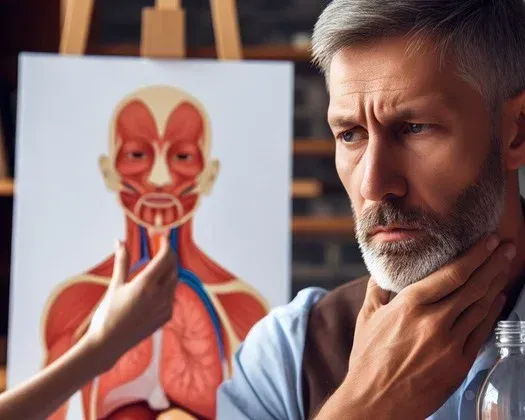What You Need to Know About Myofunctional Therapy
The goal of myofunctional therapy is to improve the strength and coordination of the muscles that are found in the orofacial region through the use of a transformative exercise intervention. When it comes to correcting dysfunctions that are associated with swallowing, breathing, and speaking, this therapy is a very important component. The emphasis is placed on enhancing the ideal function and alignment of the muscles, which ultimately results in considerable improvements in the activities of everyday life.
Contextualization of History and Development
Myofunctional therapy has seen a substantial transformation over the years, with its origins dating back to the fields of speech therapy and dental therapy. This therapy has emerged as a crucial participant in comprehensive health management, addressing a variety of orofacial disorders in an effective manner. It has received support from extensive studies from multiple sources.
Explore the principles of myofunctional therapy in detail on dedicated page ot Myofunctional Therapy
The Science Behind Myofunctional Therapy
The Complex Anatomy of Swallowing
Before we can fully understand the benefits and difficulties of myofunctional therapy, we need to learn more about the complicated web of muscles that work together to make eating possible. While swallowing may look like a simple action at first glance, it is actually a highly coordinated process that requires a lot of muscles in the mouth, throat, and oesophagus to work together perfectly.
Along with other muscles, these ones work together to move food from the mouth to the pharynx and then into the stomach. Different muscle groups and coordinated movements are used for each part of the process, which is broken up into many stages.
Some things that can stop these muscles from working at their best are birth defects, neurological issues, and even bad habits like thumb-sucking and bad tongue position. When these muscles aren’t working at their best, people may have trouble swallowing.
These problems can show up in many ways, such as having trouble starting to swallow, feeling like food is stuck in the throat, coughing or choking a lot during meals, or even aspirating food into the lungs, which can cause serious health problems like pneumonia.
Myofunctional treatment becomes a very important part at this point. In order to strengthen the muscles that help you swallow, myofunctional therapy is intended to focus on those muscles in particular. Through a set of exercises created just for these muscles, the goal is to retrain them so that they work better and more efficiently together.
However, not everyone should use these workouts. Instead, they are made to fit the needs and levels of difficulty of each person. By making muscles stronger and better coordinated, myofunctional treatment helps control the swallowing process. This makes the process of eating faster and less likely to go wrong.
It’s not just about fixing problems that are already there; myofunctional treatment also tries to stop problems from happening in the first place. By making the orofacial muscles work better, the treatment might stop swallowing problems before they get worse in the future. This part of prevention is especially important for some groups, like children, because getting help early can have big benefits in the long run. Children are part of these groups.
To get the most out of myofunctional therapy, you need to know a lot about how the muscles that help you breathe work together and how they move. People who have trouble eating can improve their health and quality of life with myofunctional therapy. This is done by figuring out and fixing problems that happen in this complicated network of muscles.

Impact on Musculature and Function
Myofunctional therapy is a type of training that helps the muscles in the orofacial area get stronger and work better together. This therapy, which is mostly made up of specific exercises, was carefully made to help these muscles work better and be more resilient.
Regular medical treatments don’t always fix a wide range of problems. Myofunctional therapy fixes these problems by focusing on the orofacial area, which includes the mouth, jaw, and face.
The exercises that are a part of myofunctional therapy are customized to meet the unique needs of each person, ensuring a personalized approach to muscle strength. The goal of these exercises is to gradually make muscles stronger and longer-lasting. They are meant to be able to range from easy movements done over and over to more complex coordination exercises.
As you work on making these muscles stronger over time, they get better at controlling their tasks and doing them quickly.
It is clear that the change in muscle tone that can be achieved through myofunctional therapy makes swallowing much easier and better. Although swallowing is a complicated process involving many muscles, the orofacial area is very important for how well those muscles work together and how strong they are.
A stronger core of muscles makes swallowing easier and more effective, which in turn lowers the risk of problems like dysphagia happening.
One more benefit of myofunctional therapy is that it can help with conditions other than swallowing. It improves the way you speak, breathe, and even your ability to keep your balance. It has a positive impact on a wide range of connected processes.
It’s possible that better muscle balance in the orofacial area will lead to better dental health, as well as clearer speech and easier breathing.
People who have disorders that affect their oral motor skills, like those who are delayed in development, have neurological conditions, or are still feeling the effects of medical treatments, can greatly benefit from this all-around growth.
Identifying and Addressing Swallowing Disorders
Recognizing Symptoms and Diagnosis
Symptoms such as difficulties with swallowing, discomfort during meals, and frequent throat clearing can indicate a swallowing disorder. Clinicians use a variety of assessment tools to accurately diagnose and develop treatment plans.
The Crucial Role of Early Intervention
Prompt recognition and treatment of swallowing disorders can mitigate their impact significantly. Myofunctional therapy plays a proactive role in this regard, emphasizing the importance of early intervention.
The Myofunctional Therapy Process
Tailored Assessment and Treatment Planning
Myofunctional therapy has been shown to be helpful in treating a wide range of orthopedic conditions, thanks to its highly personalized and patient-centered approach. Before starting this process, a full and thorough review is carried out. This review is a very important part of building the basis for a personalized therapy plan.
Please note that this basic evaluation is not just a quick look over things; it is a thorough look into the patient’s specific needs and problems, taking into account their unique orofacial shape, muscle function, and symptoms.
After a full evaluation, the next step in therapy is to make and use exercises and methods that are specifically designed for each person. There is no such thing as an answer that works for everyone. Instead, they are carefully changed to fit the needs and goals of each individual patient.
The exercises are made to focus on certain muscles and how they work. The goal is to improve power, coordination, and the way muscles work in general.
These steps don’t stay the same; they are always being changed and improved based on how the patient is doing and how they react to different kinds of therapy. This changing part of myofunctional therapy makes sure that the treatment stays useful and effective throughout the whole process.
The therapists who do myofunctional therapy have also gone through a lot of training to make sure they can not only give their patients exercises and treatments but also help them, support them, and encourage them.
Working closely with patients is how they make sure that patients understand the exercises, can do them correctly, and are driven to keep up with their therapy. In the end, this approach that is specifically made for each patient is what makes myofunctional therapy work.
This therapy improves orofacial function and general health in a way that is dynamic, responsive, and very effective. It is possible to do all of this by making sure that the treatment fits the needs of each person and constantly changing the treatment plan as those needs change.
Diverse Exercises and Techniques
The exercises used in myofunctional therapy are as varied as the patients themselves. They focus on individual needs to normalize and optimize muscle function, catering to a wide array of orofacial conditions.
Integrating Myofunctional Therapy with Oral Health


Enhancing Bite and Jaw Alignment
Myofunctional therapy contributes significantly to improved bite and jaw alignment. It is particularly beneficial when used in conjunction with orthodontic treatments, leading to better oral health outcomes.
Preventing Oral Health Complications
Strong, well-coordinated muscles not only aid in swallowing but also play a preventive role in various oral health issues. This underlines the comprehensive nature of myofunctional therapy.
Myofunctional Therapy Across Different Age Groups
Benefits for Children and Developing Jaws
Intervening early in childhood with myofunctional therapy can set the stage for healthy orofacial development, potentially reducing the need for more invasive treatments in the future.
At Paradigm Dental Therapy, we have specific support for children and myofunctional therapy options. Head on over to our programs section for a detailed service offering and descriptions.
Application in Adults and the Elderly
Myofunctional therapy is not just for children; it offers significant benefits for adults and the elderly too. It ensures continued oral functionality and contributes to healthy aging.
Collaborating Across Disciplines
Orthodontics and Myofunctional Therapy
When combined with dental work, myofunctional therapy makes orthodontic treatments last longer and work better. By using both of these methods together, people can get better oral health care that takes into account all of their needs.
The goal of myofunctional therapy is to strengthen and condition the orofacial muscles. This works well with the structural changes made by orthodontics. This relationship not only helps keep your teeth and jaws in the right place, but it also makes sure that the muscles you use for chewing, swallowing, and speaking work right.
When myofunctional therapy and orthodontics work together, the results are more steady and last longer for oral health. It fixes the underlying problems with muscle function that can make dental results less effective or even useless.
By making sure that the muscles are working with the newly straightened teeth and mouth, the chance of orthodontic problems happening again is greatly decreased. In the future, patients are less likely to need more treatments or adjustments. This means that they will generally have better oral health and need less ongoing dental work.
Adding myofunctional therapy to dental treatment plans can also make patients happier and more comfortable. Patients often say that the exercises and methods used in myofunctional therapy make them more aware of and better able to control their orofacial muscles.
Furthermore, combining myofunctional therapy with orthodontic work is an innovative method that has numerous advantages. In addition to making dental treatments last longer and work better, it also makes sure that the benefits last for a long time. This combined method is a big step forward in the fields of orthodontics and oral health. It should lead to better results for people who want complete care for their oral health needs.
Partnership with Speech Pathologists


Speech pathologists are trained to find and fix communication problems, and adding myofunctional therapy to their treatment plans can help their patients a lot. Focusing on strengthening and coordinating the orofacial muscles, this specialized therapy is a one-of-a-kind way to improve speech clarity and functional recovery.
Speech pathologists can help people with a wide range of speech problems better by using myofunctional therapy methods, especially those that have to do with muscle tone and control.
Both speech pathology and myofunctional therapy aim to improve orofacial function, which is why they work well together. Traditional speech therapy and myofunctional therapy, which focuses on muscle exercises, can work together to provide a more complete care plan for each patient.
For example, exercises that make the tongue stronger and more mobile can have a direct effect on articulation, which can make speech clearer and more precise.
Speech pathologists and myofunctional therapists can work together to help people who are healing from neurological events or other conditions that affect speech. This way of working together makes sure that the rehabilitation plan covers all the bases and works on both the neurological and muscular parts of speech output.
Using myofunctional therapy in speech pathology not only improves treatment results but also shows how important it is for people from different medical fields to work together in healthcare. Therapists can give better, more patient-centered care by using the best parts of both fields. This integrative model also helps us learn more about how muscle function and speech work together, which leads to new ways of treating patients and better results for them.
Frequently Asked Questions about Myofunctional Therapy
Here are the ten most commonly asked questions about myofunctional therapy, along with detailed answers:
-
What is Orofacial Myofunctional Therapy (OMT)? Orofacial Myofunctional Therapy is an interdisciplinary practice that works with the muscles of the lips, tongue, cheeks, and face and their related functions, such as breathing, sucking, chewing, swallowing, and some aspects of speech. It acts in the prevention, evaluation, diagnosis, and treatment of people who may have these functions compromised or altered. It can also improve facial aesthetics.
-
Who can provide orofacial myofunctional therapy? The specialist in orofacial myofunctional therapy can provide this therapy. They can work in partnership with other professionals such as dentists, doctors, physical therapists, occupational therapists, nutritionists, nurses, and psychologists.
-
What are the main problems related to OMD’s? Orofacial myofunctional disorders (OMDs) are disorders of the muscles and functions of the face and mouth. OMDs may affect, directly and/or indirectly, breastfeeding, facial skeletal growth and development, chewing, swallowing, speech, occlusion, temporomandibular joint movement, oral hygiene, the stability of orthodontic treatment, facial aesthetics, and more.
-
What is the link between feeding and speech? The muscles used for feeding, particularly those involved in swallowing, are the same muscles used for speech. Therefore, difficulties in feeding can often lead to difficulties in speech.
-
What are the advantages of breastfeeding? Breastfeeding has numerous advantages. It helps in the proper development of the baby’s oral cavity, promotes better alignment of the teeth, and aids in the correct development of swallowing patterns and speech.
-
Why do some infants have difficulty sucking? Some infants may have difficulty sucking due to a variety of reasons, including prematurity, low muscle tone, tongue tie, or other physical abnormalities.
-
What can cause an open bite? An open bite can be caused by a variety of factors, including thumb sucking, tongue thrusting, and prolonged use of a pacifier or bottle.
-
What is Temporomandibular Joint Dysfunction? Temporomandibular joint dysfunction (TMD) is a condition that affects the temporomandibular joint (the joint that connects the lower jaw to the skull). Symptoms can include jaw pain, difficulty chewing, and a clicking or popping sound when the jaw is moved.
-
What is obstructive sleep apnea? Obstructive sleep apnea is a serious sleep disorder where breathing repeatedly stops and starts during sleep. This can happen when the throat muscles intermittently relax and block the airway during sleep.
-
How could OMT be related to cases of snoring? OMT can help with snoring by improving the muscle tone of the upper airway, thus reducing the likelihood of the airway collapsing during sleep and causing snoring.
Conclusion: Embracing Myofunctional Therapy in Comprehensive Health
Myofunctional therapy should be recognized as a vital component of comprehensive healthcare, especially for those affected by orofacial functional impairments. Its influence on essential functions like swallowing is profound, underscoring its importance in promoting overall health and well-being.
For expert guidance and individualized treatment plans, visit Paradigm Dental Therapy.


